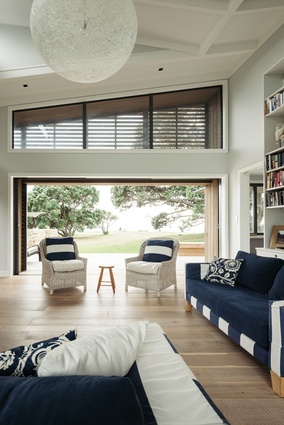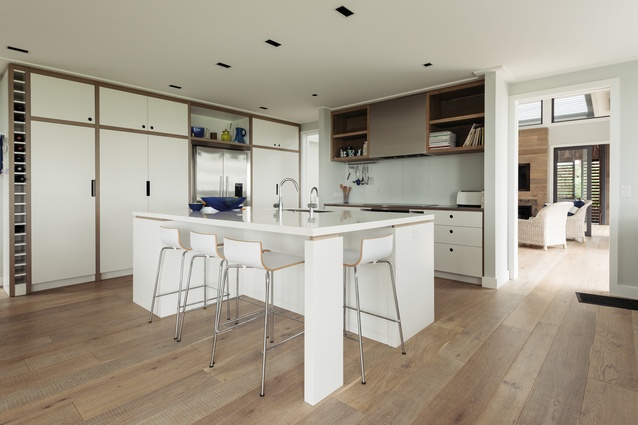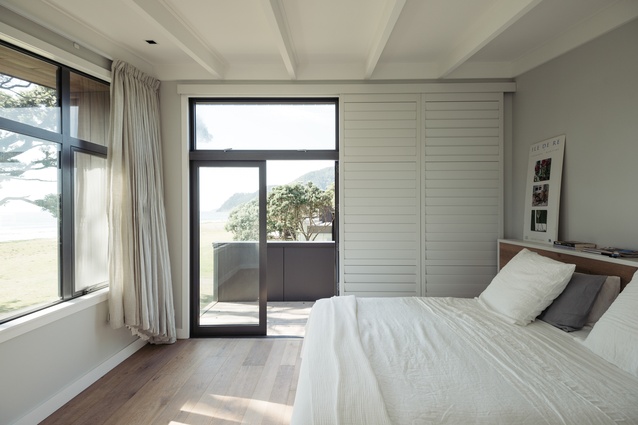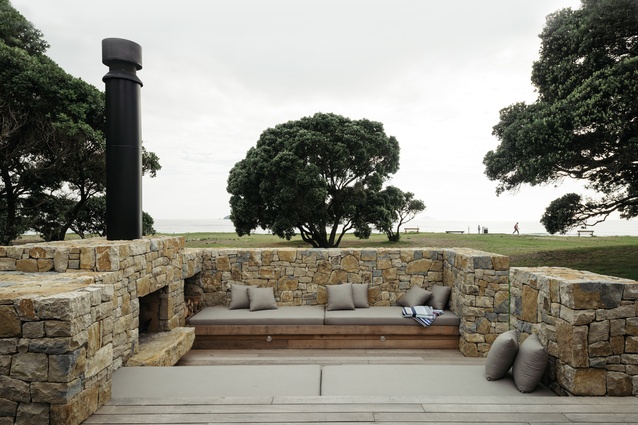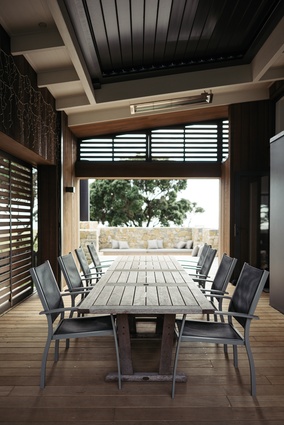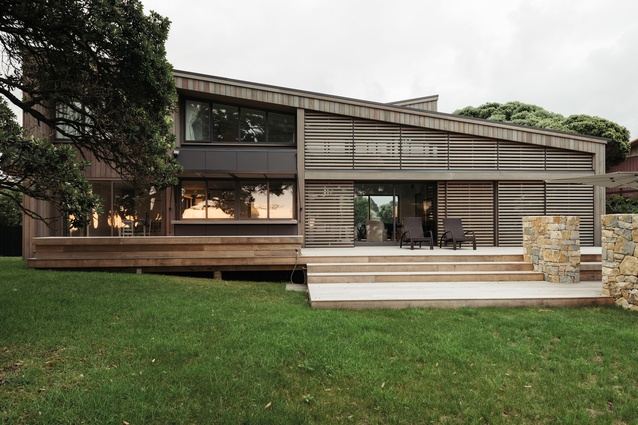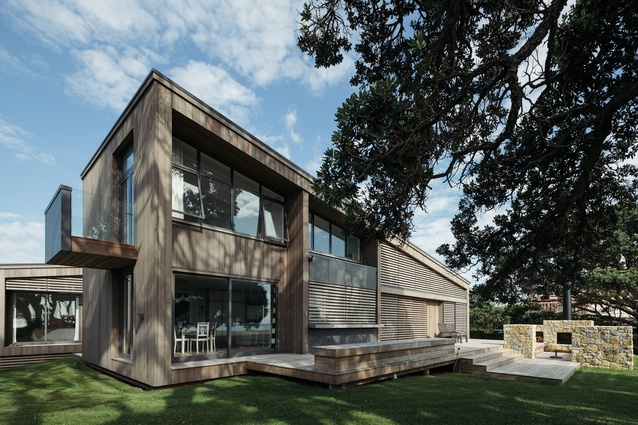Blurred lines: Pauanui Beach House
The family who owns this beach house have been coming to the site for 30 years, but the Lockwood property they used to holiday in had become too small for their growing family. All three of their sons have families of their own with young children and, as homeowner Sheryl Wells says jokingly, “there was no room to hide!”
The new home, designed by Matt Chaplin and Sam Baxter of Sumich Chaplin Architects, comfortably accommodates the three families simultaneously and is designed to merge with its beachfront site, which features an old and very prominent pōhutukawa tree.

“The form of the house slopes up towards the pōhutukawa, which gives a treehouse feel in the master bedroom upstairs,” explains Baxter. “The cedar cladding weathers well and merges with the natural colours on the site. The colour palette of the exterior is subtle, with aluminium joinery and powder-coated frames providing some subtle detailing.”

Under the lower end of the angled roof, horizontal battens counter the verticality of the cedar weatherboards while also providing privacy and security on this public site, which borders the often-busy beach promenade.
“At Christmas time and in the summer, this is a very busy area. We built low Te Kuiti limestone walls around the site, not just as a nice spot to sit but also as a way of gently directing the public away from the house, without putting fences up,” says Chaplin.
The house has two subtly divided zones, with the social areas at the beachfront side and the garage and bedrooms behind and above. The staircase, which delineates these areas, is clad in the same cedar weatherboards as the exterior of the house, which serves to merge the internal and external spaces.
“The stair circulation in the middle is treated as a separate entity wedged between the two living forms. The exterior is brought in with the cedar, which creates a relaxed, beach house feel,” says Chaplin.
This sense of merging inside and out is accentuated by the band-sawn oak flooring, which has an informal feeling similar to decking. Wells, who designed a good deal of the interiors herself, had the headboards in each bedroom made from the same timber. “I wanted everything simple,” she says. “No side tables and easy to clean. I like the way the timber blends in with the rest of the house.”

Perhaps the most used room in the summer is the outdoor room, situated under the lower end of the roof beyond the sitting room. This can be fully screened from the weather and locked up easily, using the battens to secure outdoor furniture when the home is not in use.
“Roof beams in the sitting room carry through to the outdoor room,” says Baxter. “This makes the space feel part of the home while also blurring the line between indoors and out.”
MATERIAL SELECTOR
Matt Chaplin talks about the use of horizontal screening on the beachfront façade of the house.
How do the screens contribute to the overall aesthetic of the house?
MC: It brings a lovely filtered light to the interiors and, externally, it is a play on the horizontal versus the vertical cladding. It also gives some weight. We were trying to provide some mass to the lower part of the wedge, accentuated by the stone wall in front.
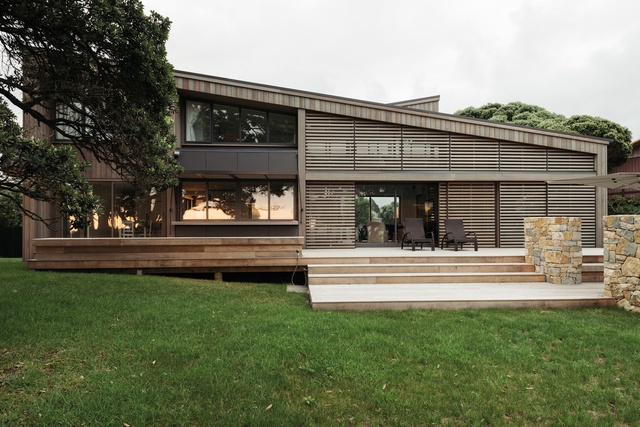
What is the function of the screens?
MC: There is this idea of a holiday house opening up when occupied and closing down when empty. We wanted to play on that: you can close the screens, shut the kitchen latch, put the furniture away and lock it up in the outdoor room. Then when people come to occupy it, you can open it up again, and it’s like you breathe life into the house.
It was also for privacy, a way of filtering and dealing with a very public site because a lot of people make their way right across the front of the house in the summer. The tree provides some privacy on one side, while the other side would otherwise be very open.


